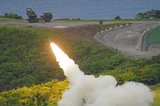BAE Systems targets Russia for Avro RJ85 placements
BAE Systems has announced that it will offer Russian airlines the Avro RJ85 as an immediate replacement for ageing aircraft operated on domestic and regional routes.
A fleet of 13 ex-Lufthansa RJ85s is coming back off-lease to BAE Systems, beginning in March and continuing through to 2011. This particular variant is certificated under the Russian Interstate Aviation Committee airworthiness rules and so is capable of going straight into seervice in Russia and CIS countries.
More than 320 aircraft in the 100-seat category are currently operational within Russia and the CIS, but with an average age of 22 years. Among these are nearly 200 Russian aircraft, such as the Tupolev Tu-134 and Yakovlev Yak-42, some of which, due to noise restrictions are unable to be operated to and from the European Union.
Nigel Benson, director sales and leasing for BAE Systems Asset Management, observed, “Our offering to Russian airlines is simple. We know they urgently need capacity now, as the existing aircraft will not remain in service for much longer. The RJ85 is affordable and is fully backed by BAE Systems with a complete suite of support services.
“The ex-Lufthansa RJ85 aircraft are naturally to a high specification with 93 seats and are fully European Aviation Safety Agency (EASA) compliant,” Benson added. “They are fitted with long-range tanks and are to a common specification. They are fully Stage 3 noise complaint and are capable of meeting the proposed Stage 4 limits. With a long service life remaining, they will make ideal interim aircraft for airlines that are waiting for locally produced aircraft to come on stream over the next five years.”























